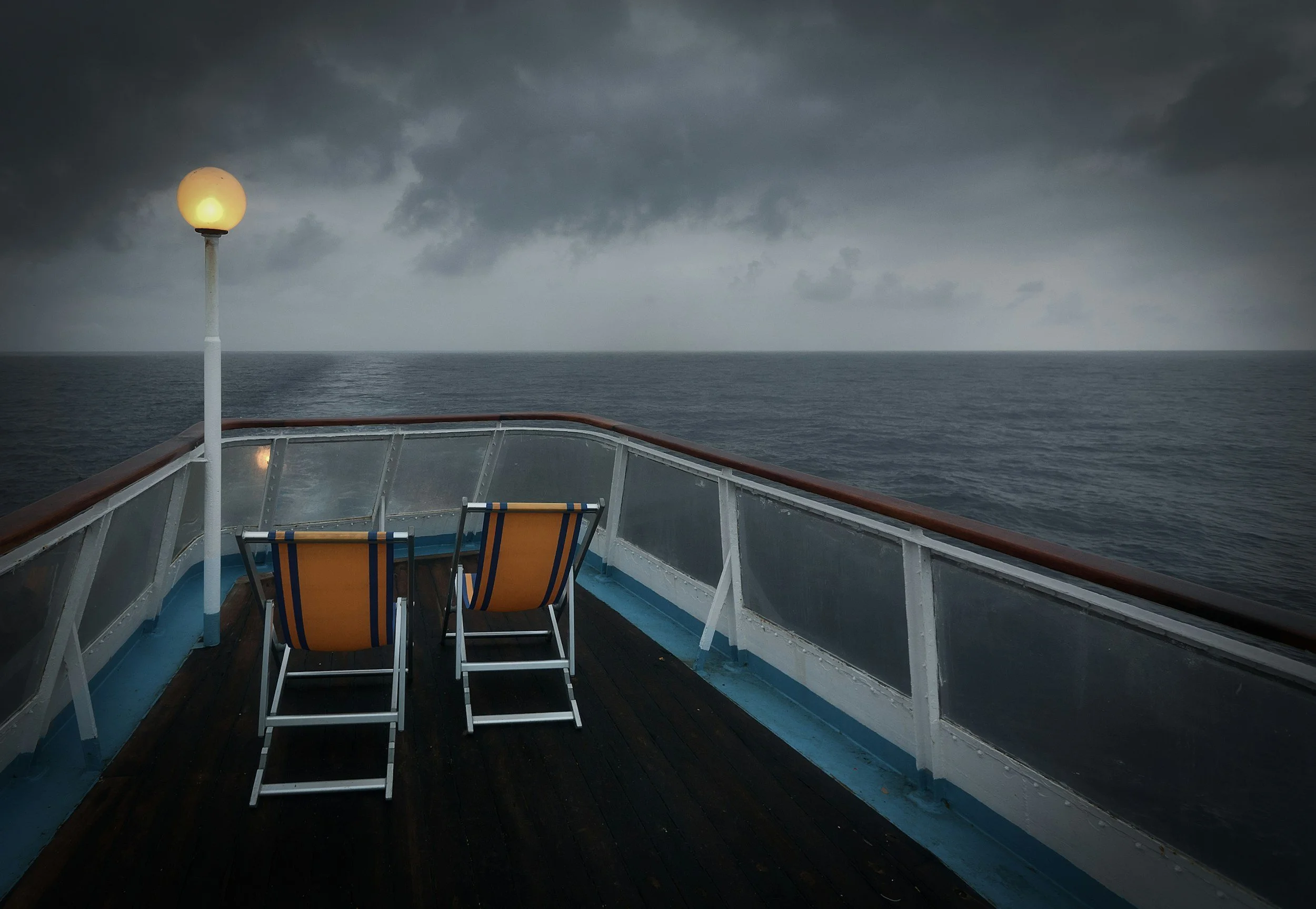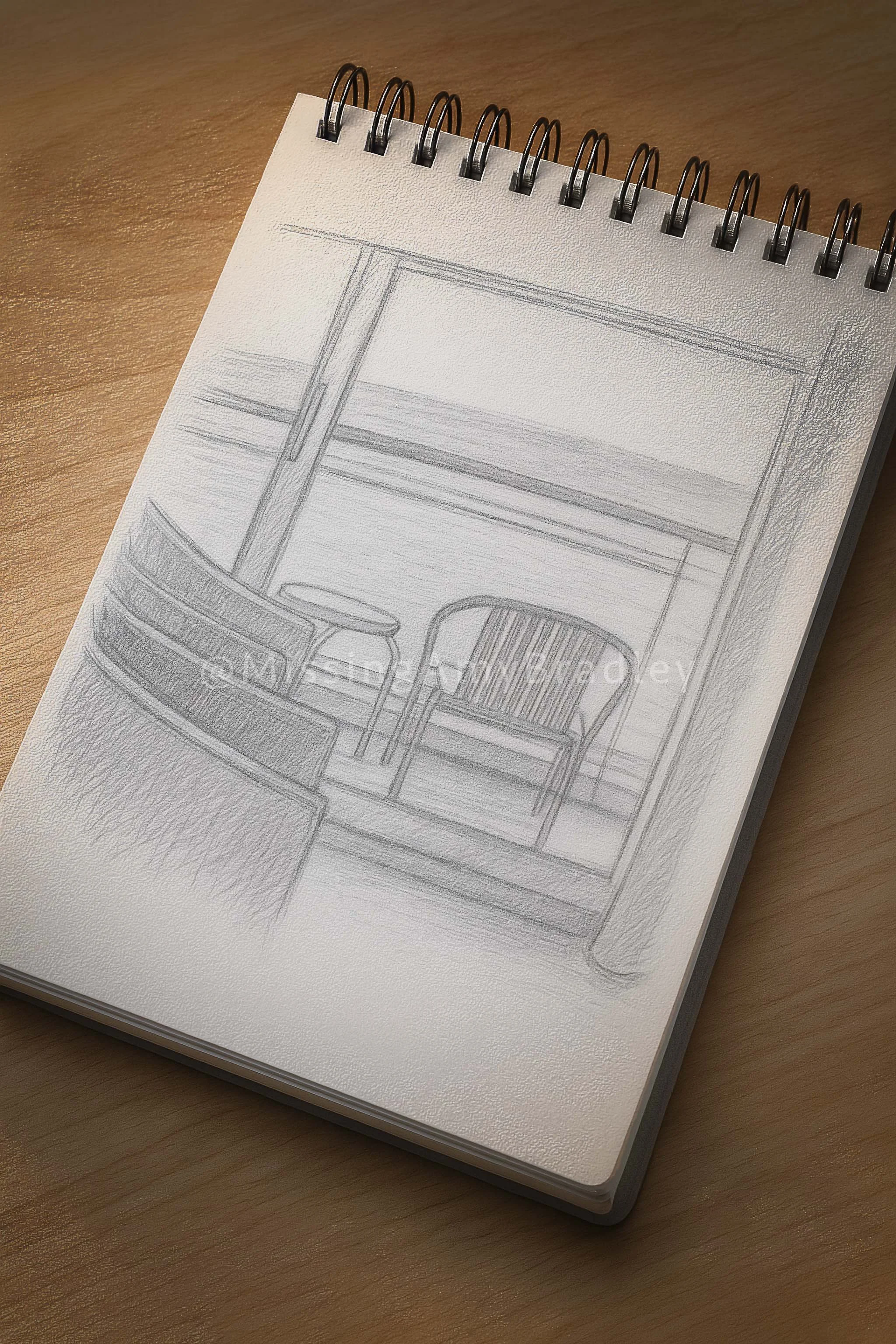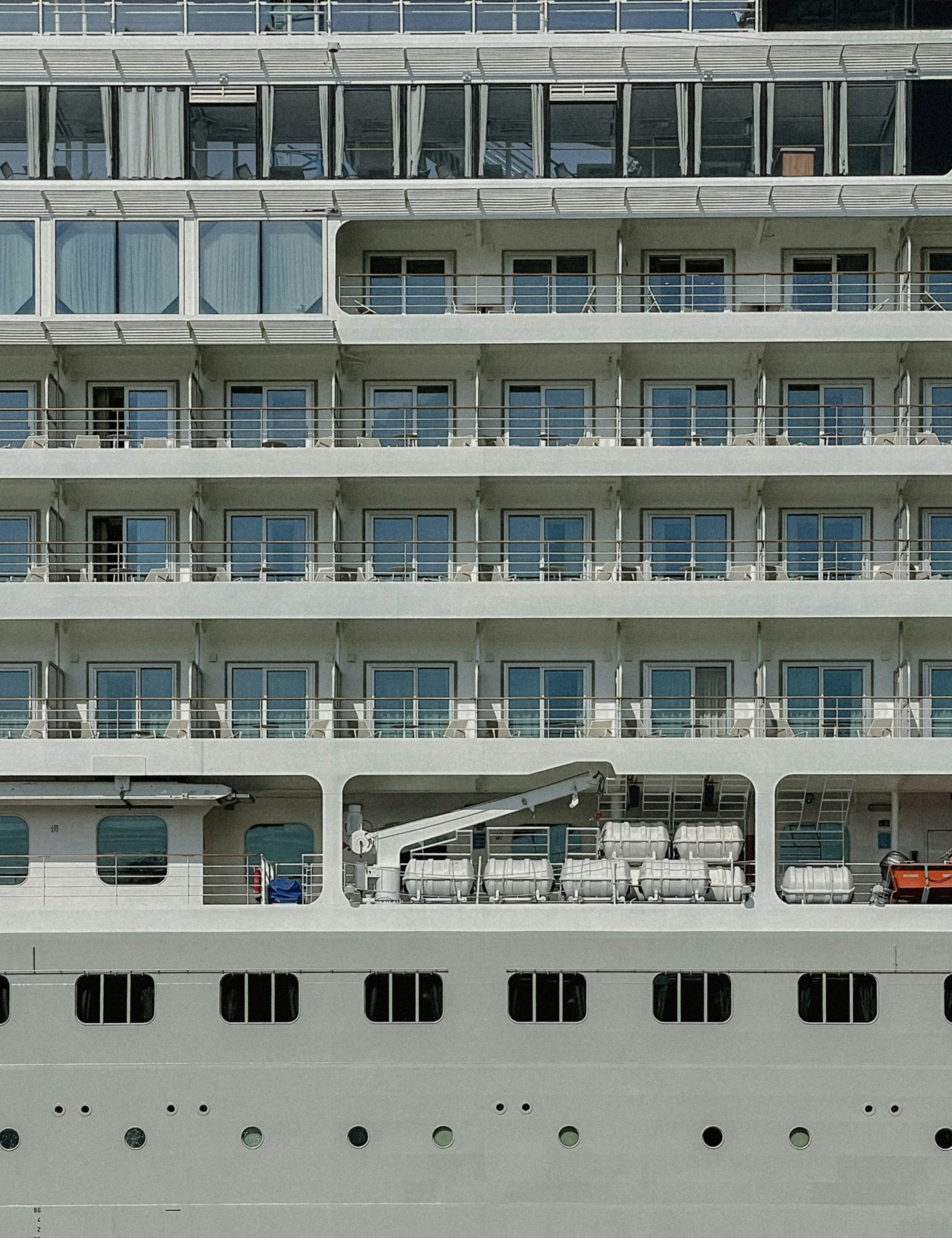
Disputing the Balcony Narrative.
Despite common assumptions, it would have been extremely difficult for Amy to simply fall over this railing.
Officially recorded at 44” high, the railing reaches well above the waist of an adult of Amy’s height, they are designed specifically to mitigate falls.
Amy was a trained lifeguard, physically fit, and fully aware of water safety. She would have been perfectly capable of leaning over to vomit without assistance or danger.
The theory that she accidentally fell, especially without leaving behind any noise, splash, or fingerprints on either the inside or outside of the balcony rail, is not only unlikely, it defies logic when viewed in context.
Original photograph reconstructed using AI
The idea that Amy stood on this table to fall, or to vomit, is not only implausible, it defies basic structural logic.
The table on her balcony, seen here in a still from her actual cabin, appears to be no more than 12-16 inches tall and made of lightweight hollow metal tubing, likely seawater-resistant aluminum, with a max load of 50lb. Its legs curve outward with no cross-bracing, creating critical weak points under any concentrated load.
These tables are designed to hold books or drinks, not the full weight of an adult human.
Standing on it would likely cause the legs to splay or buckle, not support a leap or accidental fall; based on typical design, the table appears completely inadequate for supporting full adult weight.
Original photograph reconstructed using AI
The table on the balcony wasn’t where it appeared during the investigation.
When questioned separately by the FBI, Amy’s family members each independently recalled the table’s actual position: against the sliding glass door, between the two chairs, not up against the balcony railing.
This matters.
By the time the FBI boarded the ship two days later, the room had already been cleaned and cleared by staff, compromising the original scene.
The placement of the table near the railing could have very easily been repositioned by cleaning staff, considering the room was now cleared and vacant, but according to the Bradley’s who were in the room before leaving to search the island of Curacao on March 24, that’s not where the table was.
The idea that Amy moved the table herself to climb and jump simply doesn’t hold up — not physically, and not behaviorally.
Nothing about Amy’s behavior or environment supports the idea that she jumped or accidentally fell.
At the time she disappeared, the ship was maneuvering through the narrow canal in Curaçao, not in open ocean. The area was bordered by restaurants, walkways, and hotels, meaning any splash or cry for help would’ve likely been heard or seen.
Amy was a certified lifeguard and strong swimmer, fully trained in the risks of falling from heights. She was also known to be uncomfortable with heights and refused to lean over the balcony due to her fear of the unknown in the water below.
Amy was a talented multi-sport athlete who attended Longwood University on a basketball scholarship. Known for her strength, coordination, and competitive nature, she also participated in other sports throughout her youth.
She had just graduated, was moving into a new apartment, had adopted a new dog, and was excited about the trip, even buying gifts and postcards for friends back home.
These are not the actions or mindset of someone preparing to leave their life behind. The behavior, the setting, and the psychology all point away from the fall-or-jump narrative.
Claims that Amy couldn’t have left the cabin undetected don’t hold up to real-world conditions.
On cruise ships, opening the balcony door and the cabin hallway door at the same time can cause what’s known as the “wind tunnel effect.” This occurs when air pressure shifts rapidly, but the effect isn’t constant or uncontrollable.
Its intensity varies based on multiple factors: the ship’s location, its speed, and the timing cycle of the HVAC system. Tests and firsthand accounts show that it’s possible to open the door without significant airflow, and also cracking the cabin door open for just a few seconds allows the air pressure to equalize, significantly reducing suction or door noise.
In short: it is entirely possible to exit a cruise ship cabin quietly, especially at night when others are asleep, and without drawing attention, even if both doors are briefly open at the same time.
This fact challenges the belief that Amy could not have left the room of her own volition or been led out without her family noticing.

Get Involved
It just takes one message, one share.
The content on this page is based on publicly available sources, witness recollections, photographs, and structural observations. Some claims are interpretative or inferential; not every statement has been independently verified by official investigators.
This page presents arguments, reasoning, and theories related to the balcony and table‑narrative; it should not be read as proof of any specific event.
No definitive accusations of wrongdoing are made unless supported by verifiable evidence. If any information here is inaccurate, misleading, or based on flawed data, credible sources for correction are welcomed.




